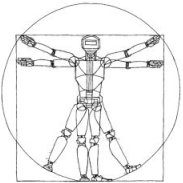Robotics: Science and Systems VI
On motion and force controllability of grasping hands with postural synergies
D. Pratichizzo, M. Malvezzi and A. BicchiAbstract:
The complexity of robotic hands is needed to adapt devices to the many kinds of tasks, but the large number of motors needed to fully actuate the DoFs comes at the cost of size, complexity and weight of devices. A possible approach to solve this problem consists of reducing the number of actuators thus resulting more efficient, simpler and reliable than their fully actuated alternatives. Reducing control inputs seems to inspire also biological systems and in particular motor control of human hands, which share with robotic hands the large number of DoFs. Recent studies demonstrated that a few control variables, named postural synergies, are able to account for most of the variance in the patterns of hand movements and configurations of hands. This paper focuses on hands with postural synergies. Reducing the number of control inputs, from fully actuated joints to few synergies, might reduce the dimension of the force and motion controllability subspaces thus compromising the dexterity of the grasp, however, this is not true in general but strongly depends on how synergies are distributed. The paper investigates to what extent a hand with many DoFs can exploit postural synergies to control force and motion of the grasped object.
Bibtex:
@INPROCEEDINGS{ Pratichizzo-RSS-10,
AUTHOR = {D. Pratichizzo AND M. Malvezzi AND A. Bicchi},
TITLE = {On motion and force controllability of grasping hands with postural synergies},
BOOKTITLE = {Proceedings of Robotics: Science and Systems},
YEAR = {2010},
ADDRESS = {Zaragoza, Spain},
MONTH = {June},
DOI = {10.15607/RSS.2010.VI.007}
}
